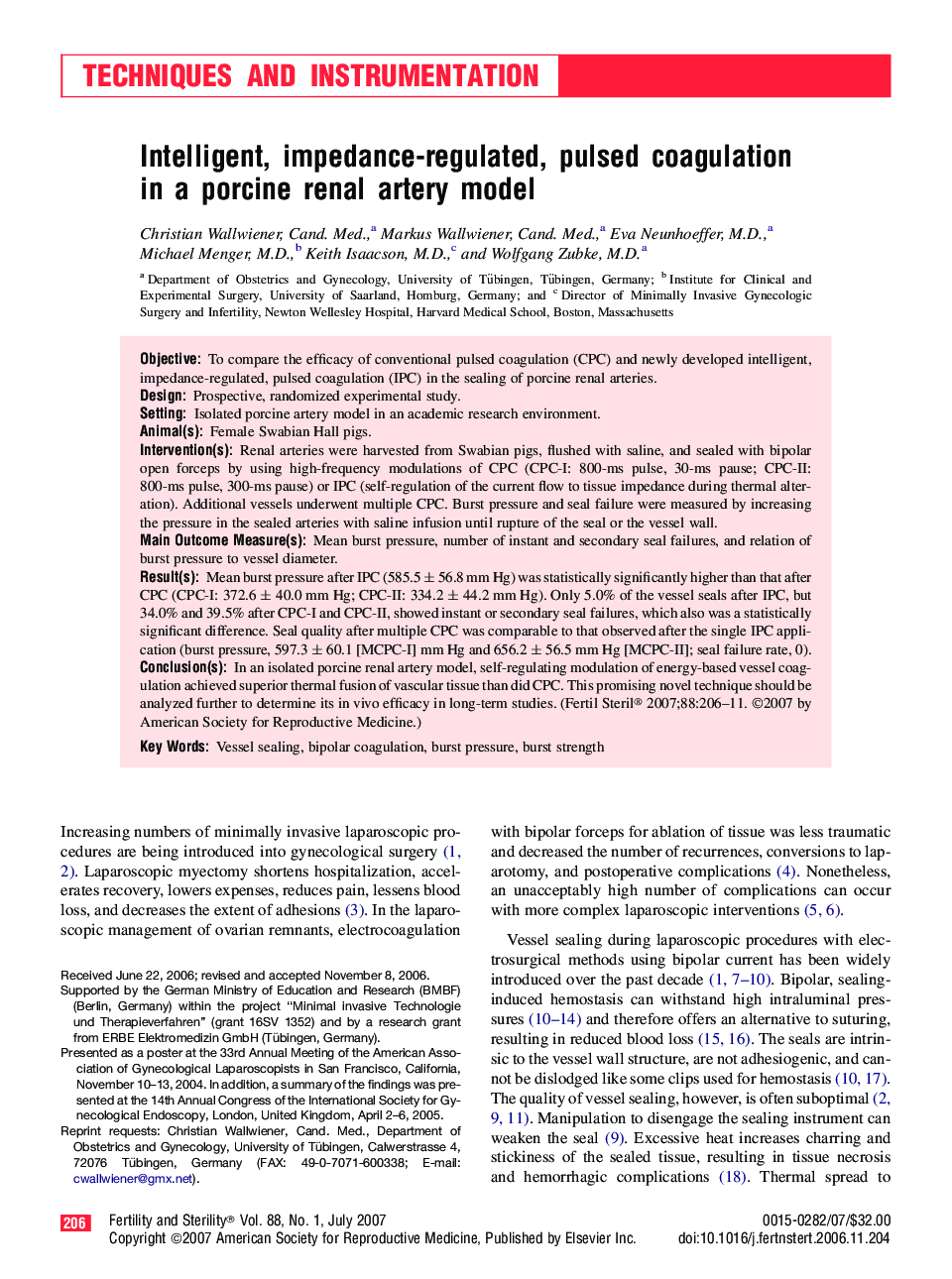| Article ID | Journal | Published Year | Pages | File Type |
|---|---|---|---|---|
| 3935688 | Fertility and Sterility | 2007 | 6 Pages |
ObjectiveTo compare the efficacy of conventional pulsed coagulation (CPC) and newly developed intelligent, impedance-regulated, pulsed coagulation (IPC) in the sealing of porcine renal arteries.DesignProspective, randomized experimental study.SettingIsolated porcine artery model in an academic research environment.Animal(s)Female Swabian Hall pigs.Intervention(s)Renal arteries were harvested from Swabian pigs, flushed with saline, and sealed with bipolar open forceps by using high-frequency modulations of CPC (CPC-I: 800-ms pulse, 30-ms pause; CPC-II: 800-ms pulse, 300-ms pause) or IPC (self-regulation of the current flow to tissue impedance during thermal alteration). Additional vessels underwent multiple CPC. Burst pressure and seal failure were measured by increasing the pressure in the sealed arteries with saline infusion until rupture of the seal or the vessel wall.Main Outcome Measure(s)Mean burst pressure, number of instant and secondary seal failures, and relation of burst pressure to vessel diameter.Result(s)Mean burst pressure after IPC (585.5 ± 56.8 mm Hg) was statistically significantly higher than that after CPC (CPC-I: 372.6 ± 40.0 mm Hg; CPC-II: 334.2 ± 44.2 mm Hg). Only 5.0% of the vessel seals after IPC, but 34.0% and 39.5% after CPC-I and CPC-II, showed instant or secondary seal failures, which also was a statistically significant difference. Seal quality after multiple CPC was comparable to that observed after the single IPC application (burst pressure, 597.3 ± 60.1 [MCPC-I] mm Hg and 656.2 ± 56.5 mm Hg [MCPC-II]; seal failure rate, 0).Conclusion(s)In an isolated porcine renal artery model, self-regulating modulation of energy-based vessel coagulation achieved superior thermal fusion of vascular tissue than did CPC. This promising novel technique should be analyzed further to determine its in vivo efficacy in long-term studies.
